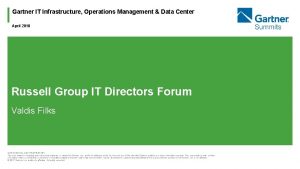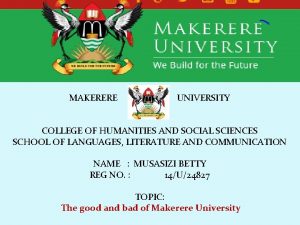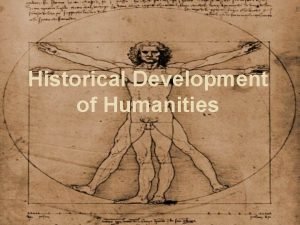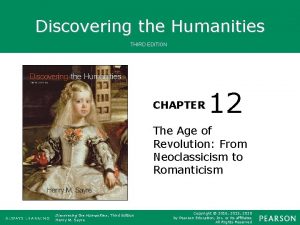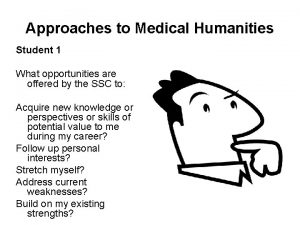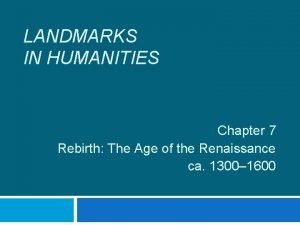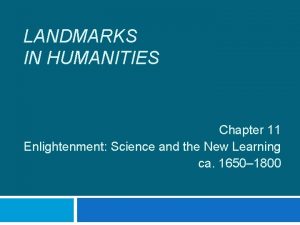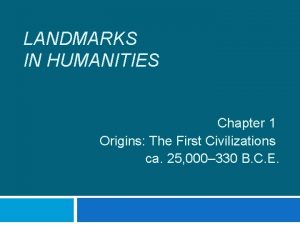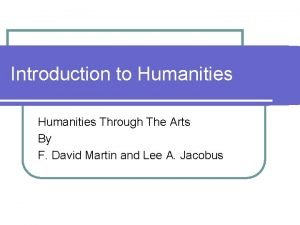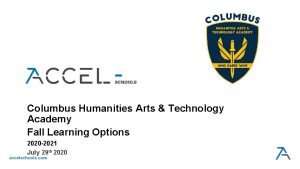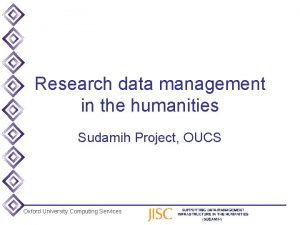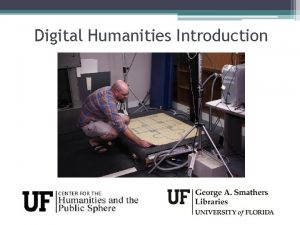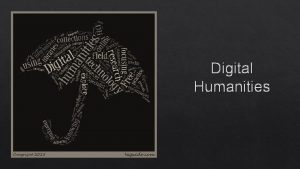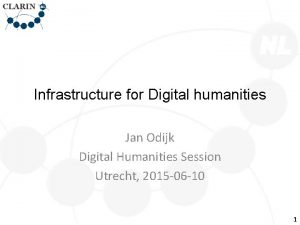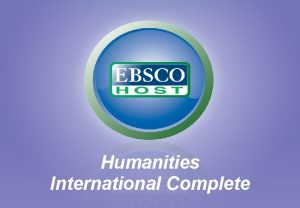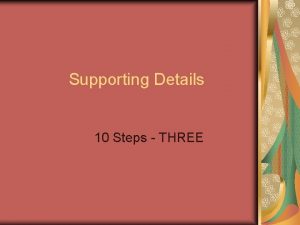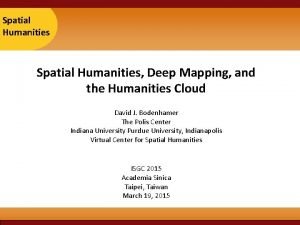Supporting Data Management Infrastructure for the Humanities Sudamih












- Slides: 12

Supporting Data Management Infrastructure for the Humanities (Sudamih): Database as a Service (Daa. S) : A Tool For Researchers Friday 21 January 2011 James A J Wilson James. wilson@oucs. ox. ac. uk

What is Sudamih? • Part of a programme to develop infrastructure for research data management at the University of Oxford • Three significant areas of activity – Understanding existing data management practices in the humanities – Training for researchers – Development of a ‘Database as a Service’ • Project runs until end of March • Long-term intention is to extend outputs to other disciplines

Databases in the humanities – current practices • Database practices vary greatly in the humanities • But the process often looks like this. . . Is this really right? This data looks interesting. I wonder where it came from?

Databases in the humanities – current practices • Database practices vary greatly in the humanities • Or this. . . Nice data – I can Oh. use this!

Problems identified • Lack of technological awareness • Poor backing-up practices • Collaboration difficult • Difficult to re-discover and re-use data • Risk of technical obsolescence • Servers and Websites costs money • Funding only lasts as long as the project, but servers and websites require maintenance • Technical expertise required • What happens to data when its creators move?

Solutions Proposed • Centrally-provided database system with institutional support • Databases hosted by institution, with automated secure back-up and version control • Web-based interface to facilitate collaboration • Simple metadata captured to describe each database, plus an interface for searching this metadata • Technical updates rolled out centrally • Costs of service built into funding proposals • Very long-term hosting with fixed PURL/DOI addresses • Possibly national cloud-based hosting

What is the Daa. S? • A web-based system that will enable researchers to quickly and intuitively – build a relational database from scratch, or – Import an existing database in common formats (such as Access) • Offering support (initially) for text, image, and geospatial data • Databases centrally hosted and maintained • Access controls to determine who can view or edit each database • Research groups may, if desired, develop their own Web front-end interfaces to databases hosted by Daa. S

Using the Daa. S We can quickly & easily add & edit data and open it to the public I can access and cite good research data I can find what data other people have been gathering

Initial features • Import / export databases in common formats • Visual interface for editing database structure • Admin interface for registering and managing databases • Access controls for adding/editing data • Visual form-builder for creating online data editing forms • Full Unicode compliance (allowing non-Roman character sets) • Generic query-builder tool • Various query response formats – Including geospatial data plotted on maps • Facility to add metadata to describe databases

Daa. S Technical Information • Daa. S hosted on JBoss Application Server 5. 0. – Web Portal uses open source frameworks JBoss Seam in conjunction with Facelets; AJAX support-based Rich. Faces • Hibernate framework used as bridging technology between Daa. S Portal and backend database • Daa. S supports various data protocols and formats – Researchers can upload Microsoft Access Database (. mdb) as it is or data in CSV, XML or SQL format • My. SQL used for admin front-end • Postgre. SQL back-end • Entirely open source

Future possibilities • Full productization and scalability • Registry service for descriptive metadata • Extended functionality beyond the humanities • Incorporation of data storage models other than relational databases – e. g. XML-based, document-based, and Couch. DB • Deployment as a cloud-based software service – Involves advance monitoring and management tools – Capable of running on other institutional virtual infrastructures • End-user documentation and support

Questions? http: //sudamih. oucs. ox. ac. uk/
 Gartner infrastructure and operations
Gartner infrastructure and operations College of humanities and social sciences
College of humanities and social sciences Historical development of humanities
Historical development of humanities Discovering the humanities 3rd edition
Discovering the humanities 3rd edition What is medical humanities
What is medical humanities Landmarks in humanities 5th edition
Landmarks in humanities 5th edition Landmarks in humanities
Landmarks in humanities Landmarks in humanities 5th edition chapter 1
Landmarks in humanities 5th edition chapter 1 Humanities through the arts
Humanities through the arts Humanities 101 art appreciation
Humanities 101 art appreciation Ldap cuni
Ldap cuni Columbus humanities arts and technology academy
Columbus humanities arts and technology academy Art and humanities endorsement
Art and humanities endorsement
